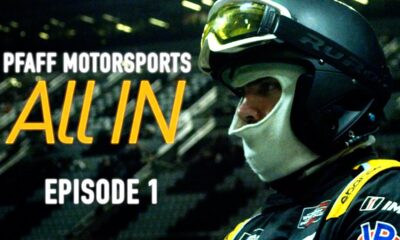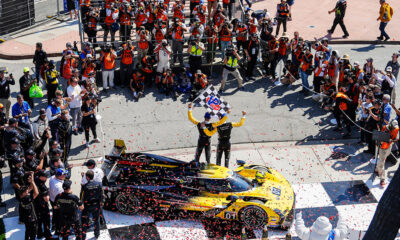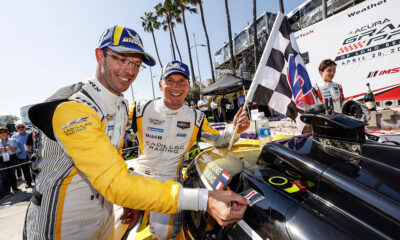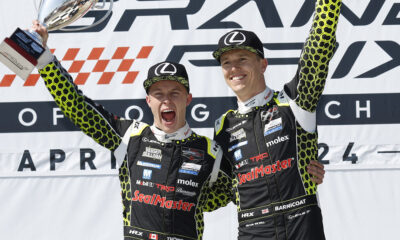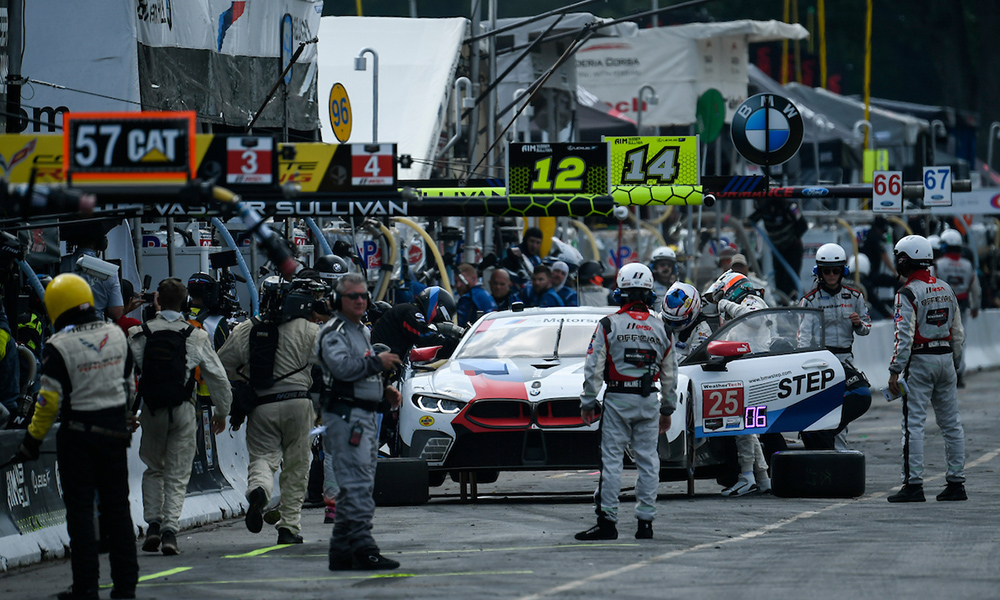
Photo: Michelin
Enter a hot IMSA pit lane, and you’re taking on the role of “a matador at a bullfight.”
The description outlined by IMSA Pit Lane Supervisor/Logistics Johnny Knotts summarizes the selfless role he and the IMSA pit lane staff take on at every IMSA event.
They have to know the rulebook, run through the gamut of potential situations and perpetually keep their head on a swivel. All the while, they have to maintain a friendly, respectful and professional demeanor with each of the teams in the heat of competition.
But in the heat of battle, this group thrives. Knotts has called the 2019 IMSA pit lane staff a “particularly special group.” It has a diverse mix of newcomers to the pit lane alongside experience pit lane veterans.
The full-time pit lane staff roster includes Morgan Healey, Jamie Eversley, Tori Barker, Craig Brooks, Johann Hermanson, Charles Harris, Bert Howerton, Richard Meldner and Blair Alexander.
Michelin Endurance Cup races require Knotts to pull from elsewhere within the IMSA technical team to staff.
Sportscar365 caught up with Knotts, first-year IMSA pit lane member Morgan Healey, who has a successful go-karting background, and veteran pit lane member Richard Meldner, to get three different takes on the atmosphere and the elements of working as part of IMSA’s pit lane group.
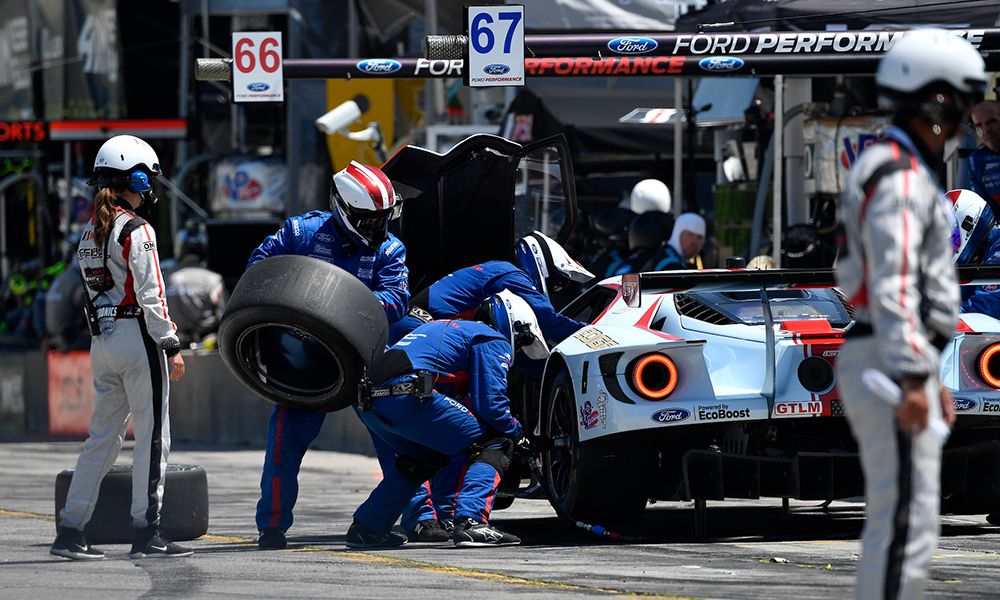
Photo: Michelin
How does your role fit within the overall team?
JK: “The main job for us for any on-track session is to observe and report. That entails everything we see or monitor in regard to rules, rules infractions, safety and safety infractions, we observe and report it up to race control.
“If there is something reported, and a conversation needs to be had, my role is to get with the crew chief, team owner, whoever, so where my other officials can go back and watching cars. We don’t want a pit lane guy to get caught up in something and miss two to three other cars in the pit box.”
MH: “There are many moving parts that go into providing the level of racing that IMSA provides, all of which play a crucial role in the success of the events.
“As a part of the competition team, pit lane officials are responsible for ensuring the safety and accuracy of the crews during pit stops. Making sure that crews are properly attired and performing the stops according to the rulebook are just a few of the roles we oversee.
“Personally, one of my favorite roles that we serve as is being the liaison between race control and the teams themselves. The teams can hear radio communication from race control, so as pit lane officials we ensure those messages are successfully delivered, comprehended and in the cases of penalties, executed. I enjoy being on the ground as both an aid to race control as well as the teams to be able to ensure the success of the race weekend as a whole.”
RM: “During regular IMSA weekends, my primary role is a dual role as pit-out and penalty box official.
“I keep track of penalties race control calls and make sure they are served properly. Sometimes this can get a bit busy if penalties stack up. Being the person who makes sure penalties are served, I sometimes tell drivers, ‘don’t visit me during a race!’
“My other role running the red light at pit out is to manage the stop and start of practice and qualifying sessions. During a race, when we have a full course yellow, there are specific points when pit-out is closed. My job is to control the pit-out light and report to race control cars that run the red light, this includes making a judgment if a car had an opportunity to stop in time.”
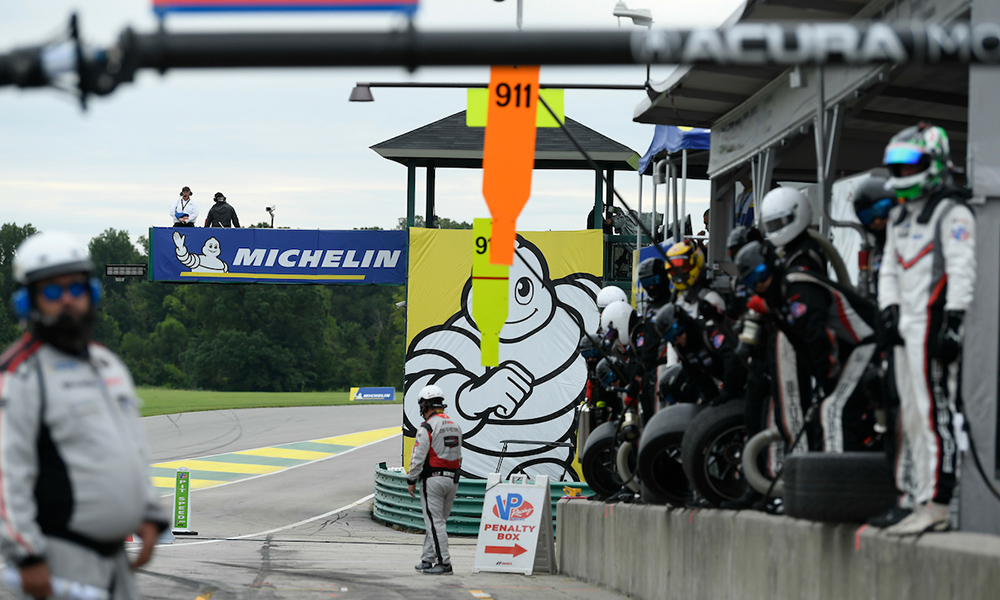
Photo: Michelin
As members of the team, what is your planning process going into each race?
JK: “What we do every year, especially if you notice this year, is integrate a lot of new faces. That’s the nature of motorsports where people come and go quite a bit. There are a lot of conference calls.
“I’ve always been big on visualization, have the team close their eyes and basically paint pictures of different scenarios. This way, the staff is already aware from their preseason training when the season arrives, and it works.
“What IMSA wants us as a unit to be is in the customer service business. When we’re standing on pit lane, those teams are our customers. Same as Michelin, it’s about how you treat them. Our job is to help and serve our customers.”
MH: “On conference calls, we review the areas that we as a group excelled at and the areas that can be improved on. I’m always eager to hear how I can be better and continue to grow successfully. We will also receive an email with our pit lane assignments for the following event and just general notes.
“I like to research the cars that will be in the boxes that I am assigned to. If I’ve had any of those cars at previous events, then I typically know what to expect as it seems that each team has their own unique way of executing pit stops. That’s an area that is intriguing for me to analyze. Each team is in a sense doing the same thing. Changing four tires, taking a full tank of fuel and the possibility of a driver change, yet it seems that they each do it differently or in a different order.”
RM: “It is really important to know where to have dinner and make reservations if necessary. We always have a few ‘traditional’ choices but also try to find new places. I like to do that ‘research…’
“Seriously, because we have multiple series and each series may have a few different rules, I reread the sections of the rule book that apply to my job for that weekend.
“For longer races and occasionally through the year, Johnny holds a group conference call with all of us where we go through specific details for the upcoming event(s).
“At every event, we also have a morning meeting before the first session to go over important event details of the weekend.
“Physically, the most important thing to do before a race weekend is to start hydrating, especially in the summer. It’s not unusual to walk 15,000 or more steps per day and at times being all day in a firesuit.”
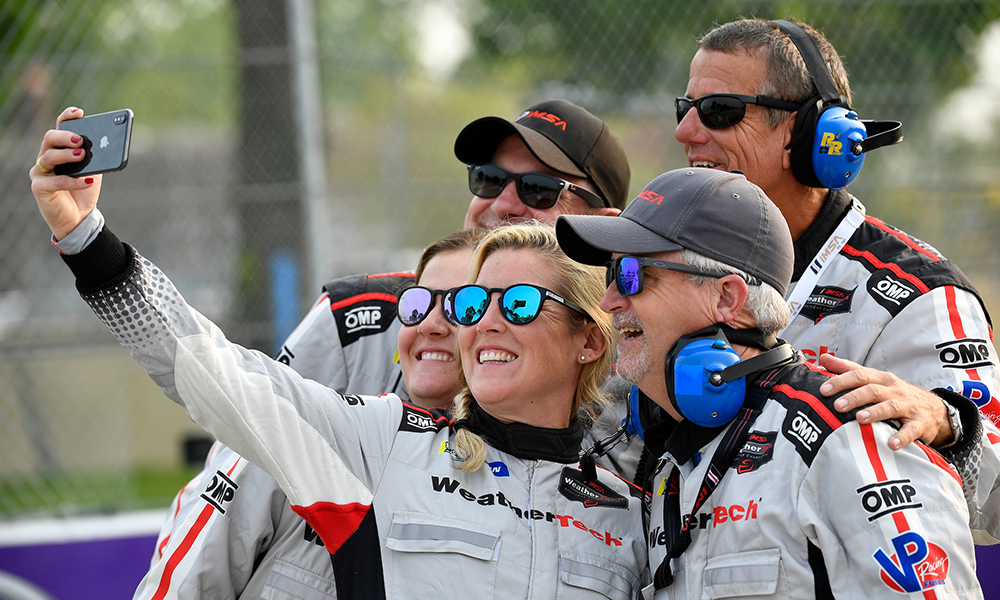
Photo: Michelin
What are some of your favorite memories?
JK: “At Sebring in either 2008 or 2009, when the Audis and Peugeots were still running, some things that occurred that race were very intense. At the time, I almost felt about ready to throw up! But looking back it was such a great experience to have as both a pit lane official and as a fan.
“Whether it is Sebring, Petit or the Rolex 24 At Daytona, the endurance factor that goes into it always keeps me motivated. It’s not a 24-hour day… it’s a 40-41 hour day, and I get excited about that. The physical endurance aspect for those races is incredible.
“Then to showcase IMSA’s diversity, my other favorite event is Long Beach. It’s the shortest race, it’s probably the most dangerous pit lane we have all year because there’s a kink, it’s tight, and it’s crowded. We don’t see the cars until they’re around that kink. But there’s something about the vibe of that place, the history and being in the L.A. area that just is special to be a part of every year.”
MH: “This year’s pit lane staff has only been together for 10 events, but we have certainly created some lifetime memories together. We do collective pit lane staff selfies at each event, even if some of the staff members are less than keen about it! I’m excited to look back at all the photos at the end of the season and reminisce on the memories made.
“Looking back on the season so far, it’s hard to forget the first race, the Rolex 24 At Daytona. All IMSA was faced with incredibly challenging conditions but being outside in the elements was trying at times. Even through the conditions we all continued to smile and laugh as a group. There was a sense of ‘we are all in this together’ that helped us, me especially, get through it. I look forward to IMSA weekends for many reasons but a big one would be the people that I get to work with.”
RM: “One of my favorite moments on pit lane actually just happened this year at Road America, when the No. 55 Mazda and the Nos. 6 and 7 Penske Acuras were all on pit lane. The No. 55 and No. 7 cars finished their service with the No. 7 leading the No. 55. The No. 6 team released the car and the car threaded between the No. 7 and No. 55! TV does not show how little room there really was between the two cars. All this happened right in front of me, and I thought we’d end up with a big wreck at pit-out. I’m still amazed there was no contact!
“Then in the early 2000s, we had a German team at the Rolex 24 that tried to use the ‘language barrier’ to delay serving a penalty. The pit lane official with the team had some difficulty communicating with the team. Race Control asked me if I could help, as I speak fluent German. I talked with the team manager, explained to him why they had to serve the penalty and that it had to happen now.
“The funny part is I also communicated it to Race Control in German, as I knew Mark Raffauf speaks German. At that time, pit lane staff also communicated on the Race Control channel which is monitored by teams. The team heard my and Mark’s conversation in German.
“It was remarkable how their English ‘improved’ for the rest of the race.”




















